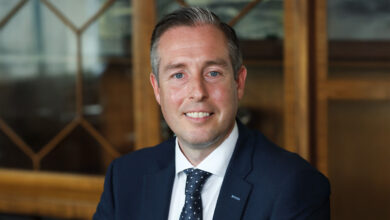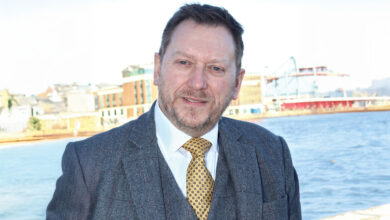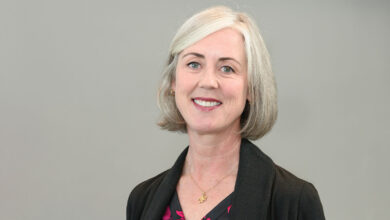Evolution not revolution: A skills perspective on advancing net zero

Northern Ireland needs a ‘skills evolution’ rather than a ‘skills revolution’ amongst its current workforce, a report investigating the skills required for a transition to a greener economy has found.
Contextualising the publication of the skills perspective for transitioning to a greener economy, current plans to deliver a new renewables-focused regional strategic planning policy due for delivery in 2024 include:
- the delivery of an industry-led green skills delivery plan;
- the development of a net zero accelerator fund; and
- the launch of a public consultation on a new fuel poverty strategy.
Transitioning to a greener economy – a skills perspective, a research project led by Energy and Utility Skills aims to include the intelligence needed to ensure that all organisations involved in the advanced zero emission play their part in delivering the required skilled workforce. Consequentially, it aims to maximise the benefits to all sections of the Northern Ireland population.
Covering eight relevant industries, the research outlines areas that are critical to the Northern Ireland economy moving forward. These are: large scale energy production, infrastructure, domestic low carbon technologies and energy efficiency, industrial processes, circular economy, transport, agriculture, and fisheries.
Industry-specific skills
Across the green industries and circular economy, the report states that there are industry-specific and generic skills that are growing in demand and will be crucial to achieving the transition to a net zero economy in Northern Ireland.
“Business skills such as project management, business and commercial, customer/stakeholder engagement, risk management and data analysis will not only be essential to the development of these industries, but they will also be demanded by a wider range of job roles than ever before,” the research outlines.
Additionally, the report acknowledges that digital skills and multi-skilling are increasingly crucial in jobs across all sectors, including those in the field workforce.
To accelerate skills growth across all sectors and thus increase the pace of the green transition within the economy, existing education, skills, and training are crucial. Therefore, successful pathways to competency are essential across the relevant workforces.
Educational pathways
Regarding entry-level opportunities, current programmes such as traineeships and the Skill Up programme aim to offer entry routes within the green industries. Additionally, the research acknowledges that current apprenticeships should review what opportunities are currently available within green industries specifically.
The report also acknowledges that further and higher education in Northern Ireland, despite being highly regarded needs to deliver more within current courses to facilitate for the green industry.
Furthermore, there is recognition that due to there being no standalone geoscience degrees available (undergraduate or postgraduate level), current students are travelling outside the region to study within this field, thus potentially leaving further skills shortages amongst the green industries.
In reflection of this, the research identifies that instead of a “skills revolution”, Northern Ireland needs a “skills evolution” amongst its current workforce to achieve a greener economy. To achieve this, upskilling is crucial, with possibilities for micro-credentials and skills passporting acknowledged.
Transferable skills
To decrease skills shortages, the report highlights key areas within current industries that could use transferable skills to accelerate the transition to a greener economy.
Oil and gas are the first industry that has the greatest potential for the supply of skills into green industries, particularly within the offshore wind industry and tidal power generation. Currently, Northern Ireland does not have a historic legacy of offshore engineering. Due to this, it is likely that this would require attracting and retaining these skills from other parts of the UK, Ireland, and further afield.
Advanced manufacturing and engineering is another industry that the research establishes could be upskilled through tailored conversion programmes, due to the natural employment projections suggesting the industries could lose around 14,000 jobs between 2020 and 2035.
Furthermore, fibre and telecom industries can facilitate the transfer of skills and therefore alleviate skills shortages.
The report establishes that on a broader basis, a “careers education, information, and guidance (CEAIG) needs to be reviewed in the context of better articulating up-to-date learning and careers pathways”, with the ultimate aim to “ensure all sections of the community are aware of and have access to meaningful employment in the green industries”.
Targeted promotion on transitioning skills for green industries is beneficial amongst focused groups within society, such as females, the long-term unemployed, those with physical or learning disabilities, or youth employment to further facilitate increased skills production. The research also encourages incentivisation and raising awareness through further educating the various groups in society.
Alleviating skills shortages
The research concludes that in order to alleviate skills shortages within the green industry, it will be important to consider “alternative routes to competence other than formal qualification structures”.
Furthermore, development is needed regarding clearer learning and career pathway opportunities. The report recommends that the Careers and Skills Portal for Northern Ireland should have a clear focus on supporting green industries and the circular economy. Employer input into curricula development is also essential to bring the current provisions up-to-date.
Focusing on a legislative perspective, the research recommends that government stakeholders and industry representatives should reflect on other greener economies, such as those in Scotland and Wales to address common challenges. Moreover, current accreditation and certificates in other regions should be acknowledged to ensure a “ready transfer of skills”.





